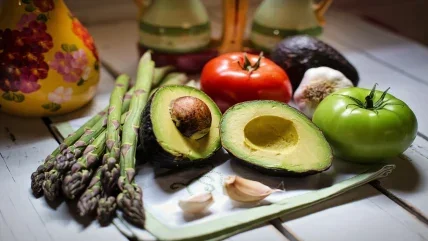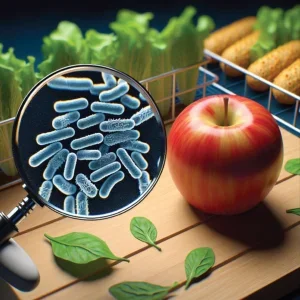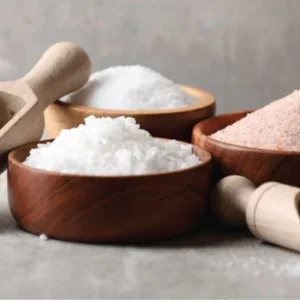
‘Clean label’ is probably not a phrase most consumers would use, and fewer still would be able to come up with a working definition of the term. However, it is fair to assume they would still recognise the underlying principles.
In a time when processed food has grown increasingly sophisticated, using exactly the right blend of additives to cultivate exactly the right characteristics, a countertrend has emerged. Consumers want to know what is in their food, and simpler, more natural ingredients are regarded as a real asset.
This drive towards label transparency started in earnest around the turn of the century, at a time when the debate surrounding genetically modified ingredients was in full swing. As concerns grew about so-called ‘Frankenfoods’, the rhetoric around ‘natural’ foodstuff became increasingly powerful and prevalent.
In Europe, meanwhile, consumers started to react against E-numbers in their food. While really just a list of EU-approved additives – many of which are derived from natural sources – these code numbers acquired unfortunate undertones and were linked to everything from hyperactivity to mood disorders; absence of E-numbers came to be seen as a positive.
Clean label, then, is an evolving concept, and what consumers will construe as ‘clean label’ varies from market to market. Broadly, though, we can see a real appetite for products that lack synthetic ingredients – the sort of food consumers might imagine making in their own kitchen.
A recent study by natural ingredients provider Beneo found that 47% of respondents actively sought out natural fibre in their foods and that 45% considered non-GMO products to be ‘better’. Meanwhile, nearly a quarter of new products launched globally in 2013 contained clean label claims, and in some market segments, such as yogurt and cooking sauces, the figures were closer to a third.
Catherine Adams-Hutt, principal of RdR Solutions Consulting and chief science and regulatory officer at Sloan Trends, agrees that ‘natural’ and ‘clean label’ have a clear consumer appeal.
“Clean label is a growing and very popular concept,” she says. “Certainly we know that at least a quarter of consumers in the US would be considered advocates of clean label, and about three quarters of consumers occasionally look for a clean label product or purchase one by design. They’re looking for something that is minimally processed, with ingredients they recognise, and they’re concerned about chemicals in food.”
Conspicuous by its absence
It should be pointed out that clean label is, to a large extent, as much about marketing as it is the innate properties of the food. While ‘natural’ and ‘clean label’ are evidently perceived as benefits, there is no fail-safe regulatory definition of either term, and in certain jurisdictions, ‘natural’ claims are used with some laxity.
According to the US FDA, it is difficult to define a food product as ‘natural’ because some level of processing has probably occurred – to take an extreme example, baking is just as much a form of processing as irradiation, however ‘natural’ the baked food might appear.
The agency therefore does not stake a definitive position, claiming only that it “has not objected to the use of the term if the food does not contain added colour, artificial flavours or synthetic substances”.
The rules for ‘natural’ meat, poultry and egg products, set by the US Department of Agriculture, are somewhat stricter: these must be minimally processed and contain no artificial ingredients. However, it is clear that the term typically lacks a concrete meaning. As a result, label-literate consumers are unlikely to rely on terminology alone, with many of them seeking out back-of-pack cues.
Adams-Hutt feels that clean label is typically defined more by an absence of certain ingredients than the presence of certain claims.
“Consumers are looking for cues that the product has been minimally processed, and it’s absent things they’re concerned about, especially artificial ingredients, artificial preservatives and artificial colouring agents,” she says.
Developing food products of this kind does pose certain challenges for manufacturers insofar as artificial additives are generally used for a reason. Because they can deliver many desirable properties – not least and visual appeal and lengthened shelf life – eliminating such ingredients is liable to come at a cost.
“It is more of a challenge to create food that is minimally processed, has longer shelf-life characteristics and the antimicrobial preservative characteristics that we want at prices that enter the retail channel,” explains Adams-Hutt. “Typically, we do need a period of shelf life for a product if it’s not going to be refrigerated, and there are a variety of different preservatives and emulsifiers available that enable the product to acquire that.
“We need to think about how to formulate these products with natural preservatives, using ingredients that are naturally antimicrobial and processing technologies characterised as minimal processing.”
While the products themselves are not necessarily more expensive – after all, by definition, clean label foods often have fewer ingredients – the reduced shelf life may push up production costs. Manufacturers may simply need to think of their clean label products in a different light, accepting they will be moved through the retail marketplace more quickly.
In many cases, they also need to make savvy swaps, replacing their usual ingredient choices with clean label alternatives. Many suppliers today, attuned to this growing market segment, offer clean label ingredient lines that help manufacturers upgrade to additive-free positioning.
Clean label starches are a good example. Typically, the food industry makes copious use of modified starches that have been chemically treated to better withstand food processing. Used as thickeners and stabilisers – as well as forming a base for gummed sweets – modified starches can function adequately under extremes of heat, shear and acidity. In this respect, they fulfil an important role, but they do not meet the demands of clean label.
A number of suppliers have therefore introduced new product lines to the market that boast similar functionality, without having been chemically treated. This means they can be written on ingredients lists simply as ‘starch’, an easily recognisable natural additive. More broadly, they create opportunities for manufacturers to market clean label custards, puddings, soups and salad dressings – traditionally regarded as challenging application areas.
Suspicious minds
In the US today, Adams-Hutt perceives a distinct demographic split among those who purchase clean label products. Older Americans are drawn towards clean label because of the perceived health benefits – they are looking for attributes such as high fibre, wholegrains, low sodium and so forth. Younger Americans, meanwhile, are more interested in perceptions of natural goodness. They are seeking organic status, markers of sustainability and other indications the product is in some sense close to the earth.
Both camps, however, converge on the idea that clean label products are inherently trustworthy. According to the International Food Information Council’s 2014 ‘Food and Health Survey’, 30% of consumers lack confidence in the safety of the US food supply, up from 18% two years previously. Given this swing toward cynicism, manufacturer transparency is valued highly.
“This whole movement is driven by basically a distrust on one level or another of the food supply,” Adams-Hutt explains. “Consumers want to trust the food they buy for their family and themselves; they want to work to avoid artificial chemicals they don’t believe are healthy for them.
“I think we’ll see this trend continue as the industry is asked to be transparent – the initiatives on labelling of GMO ingredients or products of bioengineering in this country will probably continue.”
In Europe, the situation is very similar, with initiatives underway in various countries to improve the interpretability of labels. The ultimate goal is to ensure that consumers can easily identify healthy choices.
The World Health Organization ‘European Food and Nutrition Action Plan 2015-2020’, released in September 2014, includes the latest Europe-wide guidance about food labelling. As the report explains: “Front-of-package labelling can facilitate consumer understanding of the nutritional content of many foods, especially complex processed foods, and might also have an effect on diets by encouraging food producers and retailers to reformulate their products.”
João Breda, programme manager for nutrition, obesity and physical activity at the WHO regional office for Europe, who spoke to Ingredients Insight about the action plan on page 31, adds that labelling can play a critical role in the quest for a healthy lifestyle.
“Labelling initiatives can ensure the consumer is better informed and the options are very clear,” he told us. “There are national regulations that establish the boundaries and, at the same time. there are initiatives that look at food in a very positive way.
“You have examples of the Finnish heart symbol or the Scandinavian keyhole logo, or other national logos that many countries are now working on. So there are pictorial opportunities that could help consumers make better choices, but there are also improvements in the label that could eventually simplify that decision.”
Follow the leader
Adams-Hutt notes that the clean label movement today is, to a large degree, being shaped by the retail community. US retailers such as Whole Foods, Trader Joes, Safeway and Kroger have developed their own clean label product lines that eliminate ingredients they deem to be unacceptable.
“At Whole Foods, there are 84 ingredients on the banned ingredients list, so you can’t market foods with these ingredients in their stores,” she says. “Safeway and Kroger have even more banned ingredients, so they’re definitely picking up on consumers’ concerns. For instance, they include ingredients the food science community would not have an issue with, such as high-fructose corn syrup and irradiated foods. So while the food industry wants to believe that many ingredients should be clean label, the retail community and consumers are simply not accepting that.”
Because clean label is a consumer-led trend, the food industry does to some extent need to take a back-seat role in defining it. For manufacturers, the real job is working out how to deliver these changing demands in a cost-effective and sustainable way.
“Going forward, this is going to be a significant challenge, but as a food industry, we have to listen to consumers and provide them with what they’re asking for,” says Adams-Hutt. “This is transparency, minimal processing, avoiding artificial ingredients and keeping the product as close to the earth as possible. We’ve had to relay what’s in food very plainly to consumers, and clean label is a simple approach to healthful eating.”
Despite these hurdles – and the rather nebulous, context-dependent nature of the term – the clean label concept is evidently still going strong. As consumer demand continues to grow, we can expect to see more innovation from suppliers in the months ahead, helping manufacturers position their products in a constantly shifting marketplace.






